Weekly Global Report:
Trade and Economic Updates
Highlights
The Prime Minister attends the East Asia Summit in Laos
- Prime Minister Christopher Luxon(external link) attended the annual East Asia Summit held in Laos last week, where he held bilateral talks with the leaders of Cambodia, India, the Philippines, Viet Nam and Thailand. He also delivered a speech to the ASEAN Business and Investment Summit and was guest of honour at a networking reception hosted by the ASEAN New Zealand Business Council(external link). As part of his talks with his Indian counterpart, the Prime Minister discussed ways to improve the New Zealand-India relationship and was invited to visit India in early 2025. Further information can be found in the Prime Minister’s press release(external link).
Reserve bank cuts OCR to 4.75%
- The Reserve Bank cut the Official Cash Rate(external link) by 50 basis points, to 4.75%, with the Monetary Committee noting in its statement that it assesses annual consumer price inflation to be within its 1% to 3% inflation target range and converging on the 2% midpoint. A development that will be confirmed with the release of September quarter inflation figures on 16 October. The committee noted that current subdued economic conditions are acting to constrain inflationary pressure, with business investment and consumer spending weak, and employment conditions continuing to soften. The next meeting of the monetary policy committee is due to be held on 27 October, where most economists currently expect the RBNZ to deliver another 50 basis-point cut.
Government announces changes to Overseas Investment Act
- The Government(external link) has agreed to amend the Overseas Investment Act 2005 to streamline foreign investment and help foster faster wage growth. In announcing the upcoming change, Associate Minister of Finance, David Seymour, stated that the changes would seek to “reverse the presumption that investing in New Zealand is a privilege and that investors must justify their transaction to the government.” Instead, Minister Seymour stated, the new starting point is that “investment can proceed unless there is an identified risk to New Zealand’s interests.” The Government intends to progress with the legislative changes to the Act before the end of 2025.
Americas
US inflation continues to moderate
- US inflation continues to moderate, with the annual inflation rate for September dropping to 2.4%, a decline from the 2.5% increase recorded in the month prior, according to the latest figures from the Bureau of Labor Statistics(external link). Excluding food and energy, which tend to be more volatile, core prices increased at an annual rate at 3.3%, slightly above the 3.2% the month prior. These figures, along with the latest US labour market reports, indicate that the US economy has likely continued to grow at a brisk pace over the last quarter.
North Asia
Chinese stimulus measures welcomed against ongoing deflation
- Consumer prices unexpectedly eased in China during September, while producer price deflation continued to deepen, reflective of ongoing weak demand in the Chinese economy. Data from the National Bureau of Statistics (NBS) showed that the consumer price index (CPI) rose 0.4% on an annual basis last month, the slowest in three months. This gain was boosted by a sharp rise in food prices, and core CPI (which excludes these costs) rose by just 0.1% in September, the lowest since February 2021. Meanwhile, the producer price index, declining at the fastest pace in six months (and for the 24th straight month), down 2.8% year-on-year in September.
- Given this ongoing deflationary pressure, the announcement by Finance Minister Lan that Beijing will provide support will be welcomed. In providing some additional details on the plan on Saturday, Mr Lan stated that the stimulus package will include aid to local governments to address ongoing debt problems, offer targeted subsidies to low-income Chinese, as well as support for the property market, among other measures. The size of this stimulus package, however, has yet to be announced.
Europe/China
EU-China trade dispute continues
- China’s Commerce Ministry(external link) last week announced that it will impose provisional measures against the imports of European brandy under anti-dumping regulations, and the EU launching its own investigation into cheap plywood imports from China. This follows the recent move by the EU voting to impose tariffs(external link) on Chinese electric vehicles over subsidy concerns, and the resulting antidumping investigation China instigated which targets agricultural products from the EU such as pork. The two sides having also filed multiple challenges to against the other the World Trade Organisation over these matters.
More reports
Previous global economic round-ups can be found here(external link).
View full list of market reports.
If you would like to request a topic for reporting please email exports@mfat.net
External links
The following links may provide useful information to businesses:
NZTE’s website(external link) and their myNZTE(external link) provides a range of insights and tools available to support New Zealand exporters.
The Treasury releases a weekly economic update(external link) every Friday. Stats NZ has published a data portal(external link) with near real-time economic indicators.
MBIE publishes a sector reports series(external link) which provides regularly updated reports on all industry sectors that make up the New Zealand economy. These include official economic data and the challenges and opportunities that face New Zealand’s industry sectors.
Business.govt.nz(external link) provides tools and advice from across government to save small businesses’ time and help make the business a success.
MFAT has created a tariff finder(external link) which is designed to help goods exporters and importers maximise benefits from New Zealand’s Free Trade Agreements and compare tariffs in 136 other markets.
The all of government Trade Barriers(external link) website can be used to register any trade barriers experienced or issues exporting to an offshore market. Queries can be sent via the website or through the MFAT Exporter Helpline 0800 824 605. Enquiries will be sent to the government agency best placed to answer.
Tatauranga Aotearoa Stats NZ provides official data on the value of New Zealand’s exports and imports of both goods and services, by commodity type via the New Zealand Trade Dashboard(external link). This interactive dashboard is updated every quarter and allows for filtering by country and by commodity type.
Feedback
We welcome feedback from New Zealand exporters on this report and invite requests for reporting from New Zealand’s network of Embassies and High Commissions. If you would like to subscribe to this weekly update, go to our subscription page(external link) or email us at exports@mfat.net.
Sign up for email alerts
To get email alerts when new reports are published, go to our subscription page(external link)
Learn more about exporting
New Zealand Trade & Enterprise’s comprehensive market guides(external link) cover export regulations, business culture, market-entry strategies and more.
Disclaimer
This information released in this report aligns with the provisions of the Official Information Act 1982. The opinions and analysis expressed in this report are the author’s own and do not necessarily reflect the views or official policy position of the New Zealand Government. The Ministry of Foreign Affairs and Trade and the New Zealand Government take no responsibility for the accuracy of this report.

